What is the number one point we must keep in mind when fitting a saddle to a horse and rider? The saddle must fit in motion. When the saddle works as an efficient adapter in motion it helps both horse and rider move together in harmony. A saddle must allow for both the horse's back and the rider's back to move correctly to set the stage for harmony.
Let's take a look at the horse's back and the variables we need to take into account.
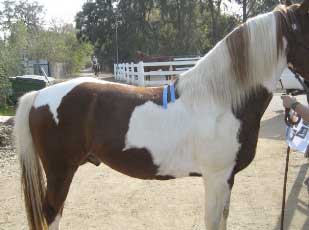
Our primary goal is for the horse to pick up its back and carry us rather than
move us around. A horse can only accept and carry the rider's weight when his
back is relaxed.
The horse's back is its source of all movement. Without the ability to use its
back efficiently for movement the horse will move in a manner that creates pain
for both himself and his rider.
A horse that is relaxed is better able to balance himself under the rider. This
allows the rider to sit more comfortably and be able to absorb the horse’s
movement correctly. In turn this allows for correct and efficient aiding.
A saddle that impinges movement or creates pain and discomfort creates a
hollowed and/or tense back. Once again, this creates pain for both horse and
rider.
Riding a horse whose back is hollowed or braced against the saddle and
rider contributes to the breakdown of its connective and supportive tissues.
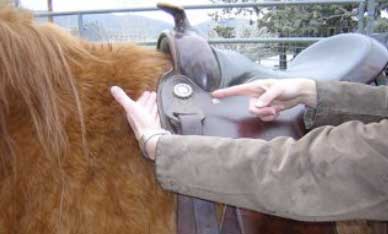
Riding a horse with a hollowed or braced back creates tension in and bracing of the rider's back. This creates back problems for riders as well as hip and knee problems.
In terms of training and performance, the horse needs to be able to use his back to maintain his balance while keeping the correct rhythm of the gait he is in. Using his back freely and correctly also allows the horse to reach under his center of gravity with each step, which has him moving athletically and efficiently. In addition, what we may believe to be training or disobedience issues with our horses are instead very often saddle fit issues. This can then create a cycle of frustration and misunderstandings between horse and rider.
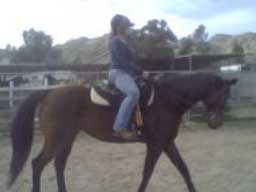
So what are we looking for in saddle fit with these points in mind?
The topside of the saddle must fit the rider's pelvis shape and size, his/her leg shape and length and allow the rider to sit in balance while in motion on the horse.
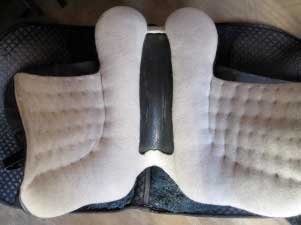
The underside of the saddle must allow for shoulder freedom and back movement of the horse, as well as the most weight disbursement of the rider across his back muscles. The saddle must also protect the horse's spine and connecting tissues as well as not bear weight on his loin area.
Often times, because the rider or the horse has changed, or the saddle has changed shape or size in combination with a worn-out pad, a once well fitting saddle will no longer fit. Often we are unaware of the changes that have taken place and we look elsewhere for solutions to problems we may be experiencing. Experts agree that saddle fit should be checked every 6 - 12 months.
Following are some signs of bad saddle fit for both horse and rider.
For the horse:
* Sore Back - White spots on coat - Muscle atrophy on back
* Girthy or fidgety while being tacked
* Will not stand while being mounted
* Behavior issues that cannot be solved through changes in training
* Behavior changes from sweet to grumpy as soon as tack is brought out or tacking begins.
* Cannot concentrate on rider and/or spooky
* Rushing downhill or towards jumps
* Tripping or stumbling
* Unable to round back or use hind end
* Unexplained lameness
* Cannot move to next level of performance
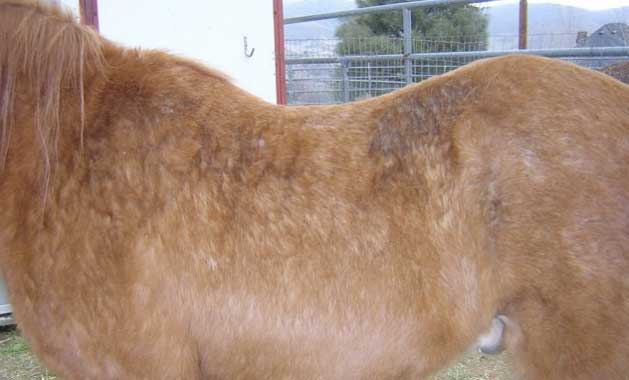
For the rider:
* Insecure feel in saddle
* Upper and lower back pain
* Seat, hip and/or knee pain
* Difficult or impossible to maintain balanced, aligned position
* Seat, legs and hands cannot work independently
* Struggling to sit back or to come forward in the saddle
* Cannot move to next level of riding skill.
Trying to determine on your own if your saddle fits can be frustrating and quite difficult. It is often best to request the help of a saddle fitter, whether it is the area representative for the manufacturer of your saddle or an independent saddle fitter.
Written by Zsuzsu Illes
www.ReBalanceSaddleFitting.com
"Balanced Saddle Fitting for all disciplines and styles of saddle based on classical principles and proven biomechanics of horse movement and rider position."

No comments:
Post a Comment